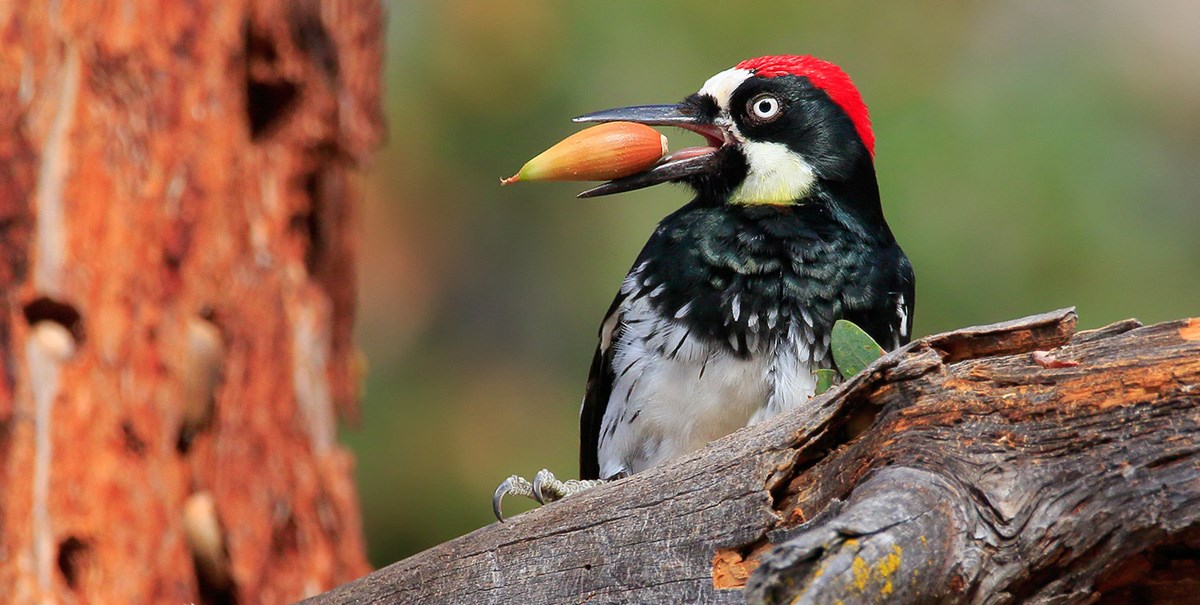Understanding Woodpeckers in Florida: Actions, Species, and Habitats
Wiki Article
Introducing the Tricks of Woodpeckers: Habits, Habitat, and Much More
Woodpeckers, with their one-of-a-kind habits and specialized adjustments, have actually lengthy interested researchers and nature fanatics alike. These impressive birds have a series of intriguing secrets that clarified their survival strategies, habitat choices, and complex communication techniques. By revealing the mysteries surrounding woodpeckers' habits and environment selections, a much deeper understanding of these avian wonders emerges, using a glance right into their fascinating world. What makes these birds absolutely remarkable, and how do they navigate their environment with such precision and skill? Let's check out the fascinating realm of woodpeckers and decipher the enigmatic details that make them such appealing topics of research study.Woodpecker Actions Insights
In analyzing woodpecker actions, an interesting display of specialized abilities and adaptations emerges, shedding light on their exceptional ecological specific niche. Woodpeckers, known for their distinct drumming on trees, possess a selection of behavioral attributes that contribute to their survival and success in their setting.Additionally, woodpeckers show a special feeding behavior defined by their capacity to essence insects from tree bark using their specialized beaks. Their lengthy, barbed tongues aid in catching prey, while their strong neck muscular tissues offer security and accuracy during pecking movements. This feeding strategy enables woodpeckers to access concealed insect larvae and remove them with remarkable effectiveness.
Environment Preferences and Selection
What aspects affect the habitat preferences and option of woodpeckers? Woodpeckers are very adaptable birds understood to live in various atmospheres worldwide. Nonetheless, they do show preferences for specific environment features. One essential factor affecting woodpecker environment selection is the schedule of appropriate nesting sites. Woodpeckers typically like forests with a mix of fully grown trees that supply sufficient possibilities for cavity excavation. These tooth cavities act as critical nesting and roosting sites for woodpeckers and are necessary for their reproducing success.Furthermore, woodpeckers show a choice for habitats with a plentiful supply of food sources. They are mostly insectivorous, feeding on beetles, ants, larvae, and various other insects found in rotting timber or tree bark. Woodpeckers often tend to prefer woody locations with a varied insect population to meet their nutritional requirements.
Moreover, the visibility of dead or rotting trees is one more key consider woodpecker environment choice. These trees not only give food sources yet likewise provide ideal substratum for cavity excavation. Dead trees are essential for the upkeep of healthy woodpecker populaces, as they play a crucial role in the woodpeckers' life process and community dynamics.
Feeding Routines and Diet Plan Make-up
Woodpeckers show a specialized feeding habits concentrated on foraging for insects within different environments. In addition to bugs, woodpeckers additionally consume tree sap, fruits, nuts, and seeds, adding range to their diet regimen depending on the season and accessibility of food sources.The foraging methods of woodpeckers are well-adapted to their arboreal way of living (Woodpeckers in Florida). Their capacity to dig deep into timber not just provides them with food but also helps in creating nesting cavities and establishing territories. Woodpeckers play a crucial role in maintaining the health of forests by controlling insect populaces and assisting in the disintegration of timber. Recognizing their feeding behaviors and diet regimen make-up is necessary for preservation initiatives aimed at protecting these distinct and important birds.
Drumming Sounds and Interaction
Using fast drumming sounds on Check Out Your URL numerous surface areas, woodpeckers utilize a distinctive kind of interaction to signify area limits and attract friends. This drumming habits is not just a method of interaction yet additionally works as a method for woodpeckers to establish their existence within a particular location. The intensity, speed, and pattern of the drumming can communicate crucial information to other woodpeckers around.Woodpeckers use drumming noises to reveal their visibility in a region and to advise off potential intruders. The loud and repeated nature of the drumming functions as a clear signal to various other woodpeckers that the Click Here location is currently declared. This assists in reducing disputes and minimizing physical confrontations in between individuals.

Survival Adaptations and Specialized Composition

Verdict
Finally, woodpeckers display one-of-a-kind behaviors, such as drumming audios for communication, and have specialized anatomy for survival in their chosen environments. Their feeding routines and diet plan composition further demonstrate their adaptability to numerous settings. By comprehending these aspects of woodpeckers, scientists and preservationists can better protect and maintain these interesting birds and their ecosystems.Report this wiki page